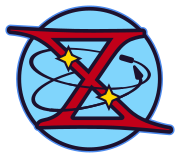 Gemini 10 is boosted into a higher orbit by its Agena Target Vehicle | |
| Mission type | |
|---|---|
| Operator | NASA |
| COSPAR ID | 1966-066A |
| SATCAT no. | 2349 |
| Mission duration | 2 days, 22 hours, 46 minutes, 39 seconds |
| Orbits completed | 43 |
| Spacecraft properties | |
| Spacecraft | Gemini SC10 |
| Manufacturer | McDonnell |
| Launch mass | 8,296 pounds (3,763 kg) |
| Landing mass | 4,254 pounds (1,930 kg) |
| Crew | |
| Crew size | 2 |
| Members | |
| EVAs | 2 |
| EVA duration | 1 hour, 28 minutes |
| Start of mission | |
| Launch date | July 18, 1966, 22:20:26 UTC |
| Rocket | Titan II GLV, s/n #62-12565 |
| Launch site | Cape Kennedy LC-19 |
| End of mission | |
| Recovered by | USS Guadalcanal |
| Landing date | July 21, 1966, 21:07:05 UTC |
| Landing site | 26°45′N 71°57′W / 26.750°N 71.950°W |
| Orbital parameters | |
| Reference system | Geocentric |
| Regime | Low Earth orbit |
| Perigee altitude | 299 kilometers (161 nmi) |
| Apogee altitude | 756 kilometers (408 nmi) |
| Inclination | 28.8 degrees |
| Period | 95.19 minutes |
| Epoch | July 19, 1966[1] |
| Docking with GATV-5005 | |
| Docking date | July 19, 1966, 04:15:00 UTC |
| Undocking date | July 20, 1966, 19:00:00 UTC |
| Time docked | 1 day, 14 hours, 45 minutes |

 (L-R) Young, Collins | |
Gemini 10 (officially Gemini X)[2] was a 1966 crewed spaceflight in NASA's Gemini program. It was the 8th crewed Gemini flight, the 16th crewed American flight, and the 24th spaceflight of all time (includes X-15 flights over 100 kilometers (54 nautical miles)). During the mission, flown by future STS-1 Commander John Young and future Apollo 11 Command Module Pilot Michael Collins, Collins became the first person to perform two extravehicular activities.
- ^ McDowell, Jonathan. "SATCAT". Jonathan's Space Pages. Retrieved March 23, 2014.
- ^ Hacker, Barton C.; Grimwood, James M. (September 1974). "Chapter 11 Pillars of Confidence". On the Shoulders of Titans: A History of Project Gemini. NASA History Series. Vol. SP-4203. NASA. p. 239. Archived from the original on 2010-01-13. Retrieved 2013-09-26. With Gemini IV, NASA changed to Roman numerals for Gemini mission designations.